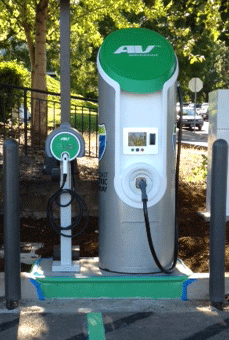Last year, Oregon joined seven other states in issuing a declaration that we would put more zero-emission vehicles on the road. The initiative would aim for 3.3 million clean fuel vehicles within 12 years.
Today, these states have launched first steps to turn the plan into reality. From the Chicago Tribune:
The eight-state coalition, which includes Connecticut, Maryland, Massachusetts, Oregon, Rhode Island and Vermont, said in a report today they plan reciprocity agreements for non- monetary enticements, such as carpool lane access and preferential parking for ZEVs, and will lobby the U.S. to extend tax credits for rechargeable and hydrogen autos. They’ll also encourage installation of workplace chargers and the use of uniform refueling-station signs.
“Creating a strong and robust market for zero-emission vehicles is critically important to the success of clean-energy technologies,” New York Gov. Andrew Cuomo, D, said in a statement Thursday. “This action plan will help develop the infrastructure and coordinated policies we need” to reach the goal of 3.3 million ZEVs on highways by 2025, he said.
Measures to coordinate incentives for buyers of ZEVs were a missing component when the states, which account for about a quarter of U.S. auto sales, announced their combined volume target in October. The new enticements also complement California’s mandate to cut automotive carbon emissions and stricter U.S. fuel-economy rules that are already prodding carmakers to offer more efficient models.
A timetable for introducing the new measures wasn’t disclosed in the report.
U.S. sales of plug-in hybrids, including General Motors’ Chevrolet Volt, and battery-only cars, such as Nissan’s Leaf hatchback, have risen 26 percent this year through April to 31,027, according to HybridCars.com’s monthly Dashboard.
Great news all around, as states begin exploring alternatively fueled vehicles. We know that the reduction in carbon and greenhouse gas emissions produces huge savings in public health costs (to the tune of $10 billion by 2020) but it also allows these states to produce home-grown options for transportation fuels.
After all, why send money to oil companies importing gas and diesel when we can manufacture clean fuel here at home?
Oregon’s Clean Fuel Program would further support this move toward zero emission vehicles. The program helps expand the alternative fuel market (like electricity) by providing opportunities to expand fueling infrastructure beyond gas and diesel. Learn more: www.cleanfuelswork.com
